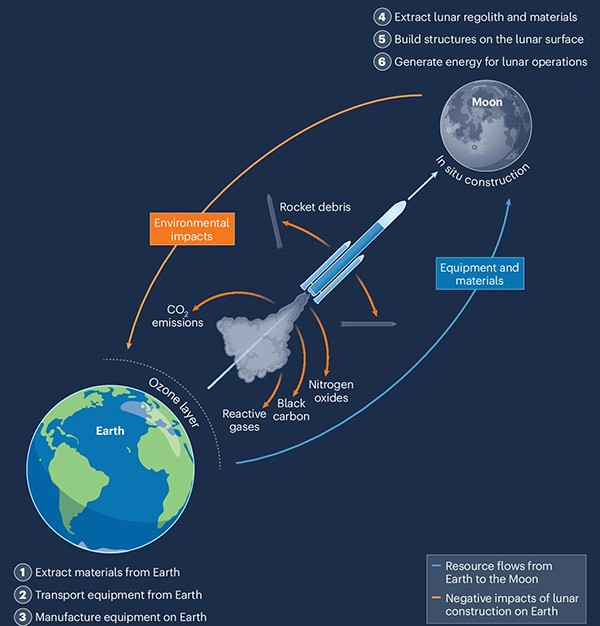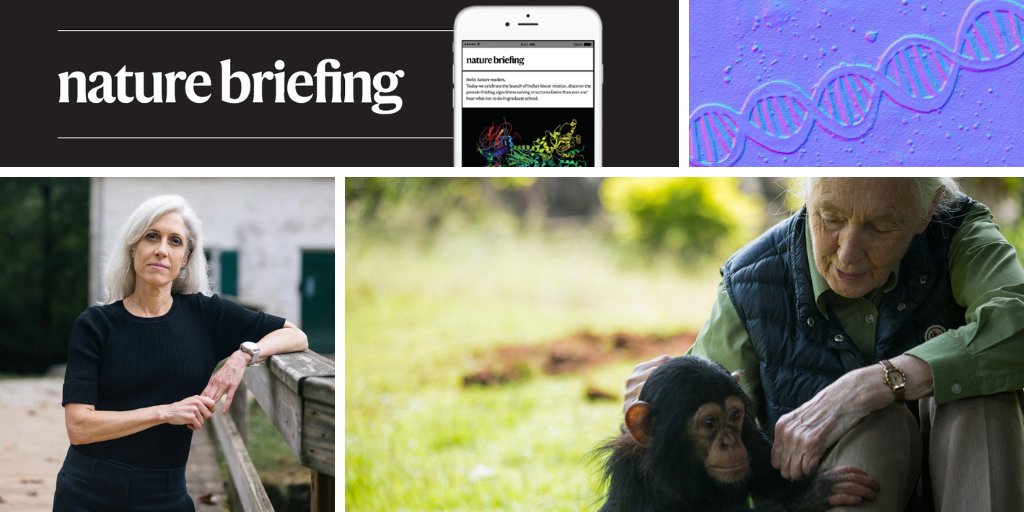You have full access to this article via your institution.
Hello Nature readers, would you like to get this Briefing in your inbox free every day? Sign up here.
Credit: Sumy Sadurni/AFP via Getty
Primatologist Jane Goodall, known for her work with chimpanzees, has died aged 91. During her career, Goodall “proved that science could extend its boundaries without losing rigour”, says anthropologist and primatologist Mierya Mayor — she broke scientific convention by using names to identify animals and was among the first to show that they had emotions, empathy and culture. Beyond primatology, Goodall’s talent as a storyteller showed it is possible for researchers to be advocates and be taken seriously, says conservation scientist Euan Ritchie. She inspired generations of women to follow in her scientific footsteps, adds Mayor.
Nature | 5 min read
Microbiologist and immunologist Susan Monarez was ousted as director of the US Centers for Disease Control and Prevention (CDC) just a month after she assumed the post, having been nominated by the administration of US president Donald Trump. In an exclusive interview — her first since she became CDC director — she discusses her childhood on a dairy farm, the dedication of the agency’s staff and an attack on its headquarters eight days into her tenure, in which a gunman killed a police officer. She lost her job, she says, because she refused to fire employees without cause or pre-approve vaccine recommendations that hadn’t yet been made. “I would never do that, as a scientist,” she says.
Nature | 8 min read
Researchers have found a way to use heat to power DNA computers — biological devices that perform calculations using the biochemical properties of DNA bases. The team found that by cycling the temperature of the system, they could charge and recharge bespoke DNA circuits. When put to the test, the team found that this method could power at least 16 rounds of computations in a 200-molecule-strong DNA computer. “Unlike chemical batteries, this recharge leaves behind virtually no waste[d energy],” says bioengineer Lulu Qian.
Nature | 4 min read
Reference: Nature paper
The US government has shut down after lawmakers in Congress failed to agree on a funding bill to keep it running. During the closure, the administration of President Donald Trump has encouraged mass lay-offs of federal workers — a group that includes tens of thousands of scientists. Non-essential operations have halted, including in-house basic research at the US National Institutes of Health. If the shutdown lasts more than a few days, non-government scientists will feel a knock-on effect: both the US National Science Foundation and the US Environmental Protection Agency will stop awarding new grants.
Nature | 5 min read
Features & opinion
A global treaty to safeguard the two-thirds of the ocean that lies beyond any country’s jurisdiction received its 60th ratification on 19 September, meaning it will now become international law. The High Seas Treaty aims to protect 30% of those vast waters by 2030, through the creation of marine protected areas, where overfishing and deep sea mining can be restricted. The treaty “is a conservation opportunity that happens once in a generation, if that,” says marine scientist Lisa Speer told The New York Times.
Inside Climate News | 10 min read & The New York Times | 6 min read
“It’s one thing to discover a compound, and a totally different thing to discover a new functional material,” notes materials scientist Anthony Cheetham. That’s been one problem with high-profile attempts involving Google, Microsoft and Meta to speed up materials discovery using artificial intelligence: thousands of suggestions that aren’t feasible in the real world, because they’re made of extremely scarce radioactive elements such as promethium, for example. Many researchers still think that AI holds great promise in materials science. But as the approach matures, researchers are pursuing more collaboration with experimental chemists, or re-focusing on fine-tuning existing materials and manufacturing processes.
Nature | 12 min read
Inspired by kirigami — the Japanese art of transforming paper into 3D designs using cuts and folds — a new type of parachute expands from a flat disc into a spring-like 3D cone. The parachute’s slits mean that it isn’t buffeted by the wind as it falls, which makes it more accurate than those with conventional designs. This could allow for the targeted delivery of packages such as humanitarian aid, the researchers who developed it say.
Nature | 5 min video
Infographic of the week

The potential environmental impacts of lunar construction — on both the Moon and Earth — are being overlooked, argue four civil engineers. The production of the materials needed for such construction and their transport to the Moon will put a drain on Earth’s resources and contribute hugely to greenhouse gas emissions. Integrating lunar construction into Planetary Boundaries — a framework developed to guide sustainable terrestrial development — could “help ensure that early decisions do not exacerbate resource scarcity or environmental degradation on Earth”, the authors write. (Nature Astronomy | 8 min read) (Ning Zhang et al./Nature Astronomy)
Today I’m listening to music performed by an unlikely artist — a mushroom. This unusual maestro is part of Bionic & The Wires, an art project that explores the inherent rhythms of non-human life forms.
Jon Ross and Andy Kidd, the duo behind the project, hook up fungi to equipment that records their bio-electrical signals and uses them to control bionic arms. Add a keyboard to the equation and voilà — mushroom music.
If you have a favourite microbial musical artist — a viral Vivaldi or bacterial Bach, perhaps — let me know, along with your feedback on this newsletter, at briefing@nature.com.
Thanks for reading,
Jacob Smith, associate editor, Nature Briefing
With contributions by Flora Graham & Josh Axelrod
• Nature Briefing: Careers — insights, advice and award-winning journalism to help you optimize your working life
• Nature Briefing: Microbiology — the most abundant living entities on our planet — microorganisms — and the role they play in health, the environment and food systems
• Nature Briefing: Anthropocene — climate change, biodiversity, sustainability and geoengineering
• Nature Briefing: AI & Robotics — 100% written by humans, of course
• Nature Briefing: Cancer — a weekly newsletter written with cancer researchers in mind
• Nature Briefing: Translational Research — covers biotechnology, drug discovery and pharma

